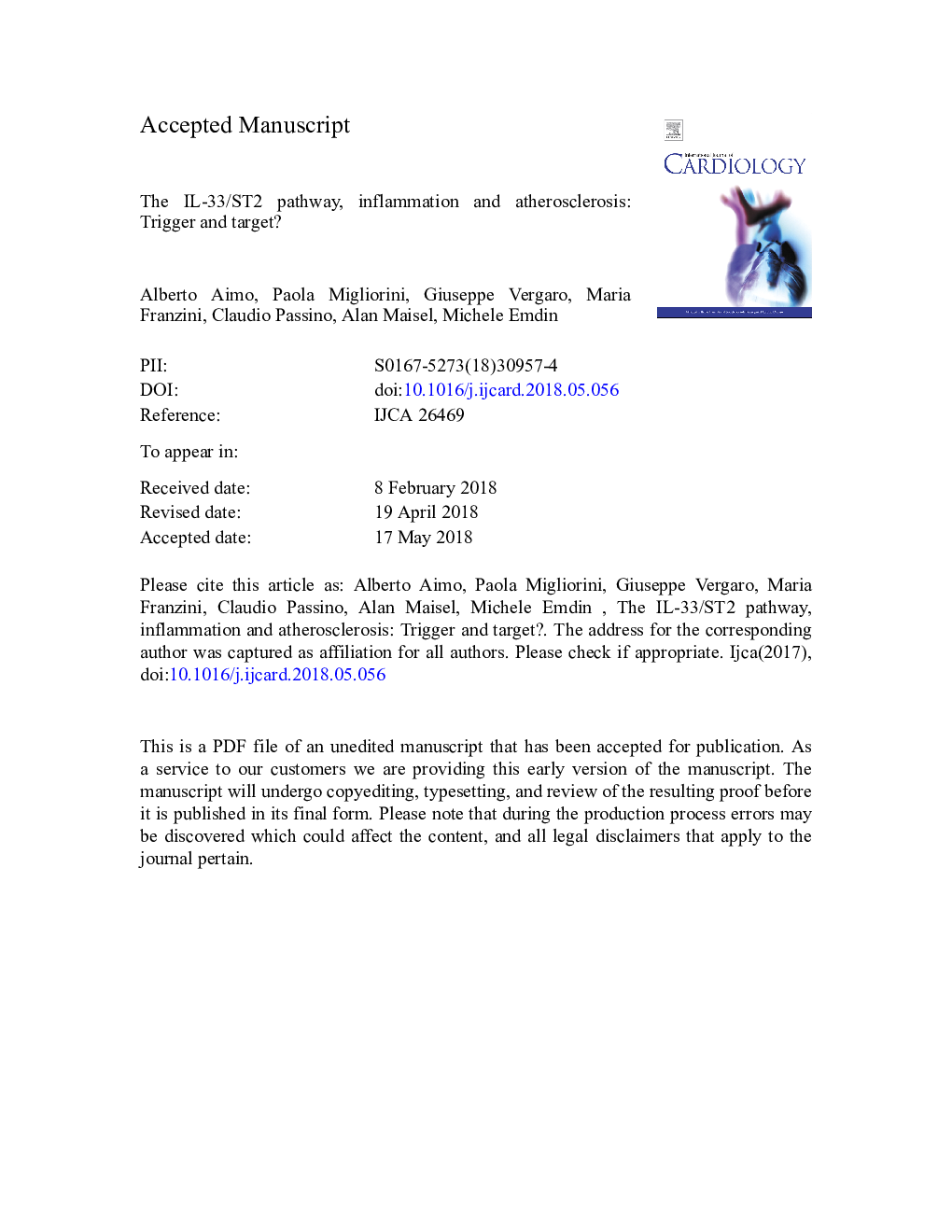| Article ID | Journal | Published Year | Pages | File Type |
|---|---|---|---|---|
| 8661788 | International Journal of Cardiology | 2018 | 19 Pages |
Abstract
Under this respect, the IL-33/suppression of tumorigenesis 2 (ST2) pathway deserves consideration. Indeed, its elements are particularly expressed in the endothelium of arterial vessels, and the interaction between IL-33 and the ST2 receptor blunts the immune response characteristic of atherosclerosis. By contrast, soluble ST2 (sST2) acts as a decoy receptor for IL-33, thus blocking its protective effects. Despite a solid theoretical framework, no definite demonstration of an involvement of the IL-33/ST2 pathway in atherosclerosis has been provided. Therefore, further studies are warranted to verify if elements of the IL-33/ST2 pathway may be proposed as markers of plaque burden and predictors of future cardiovascular events, and to explore the potential clinical benefit of enhanced IL-33/ST2 signalling in atherosclerosis.
Keywords
Related Topics
Health Sciences
Medicine and Dentistry
Cardiology and Cardiovascular Medicine
Authors
Alberto Aimo, Paola Migliorini, Giuseppe Vergaro, Maria Franzini, Claudio Passino, Alan Maisel, Michele Emdin,
